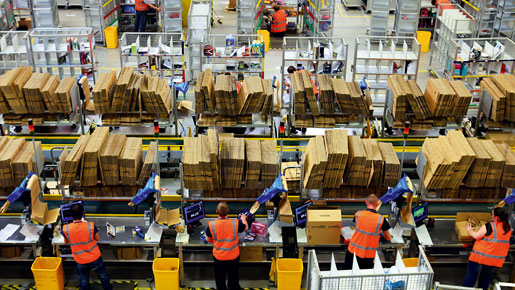
Retailers are facing challenging times. Wage constraints, rising inflation, spiraling fuel prices and energy costs are squeezing household budgets. This not only affects retailers’ sales and earnings figures, but the wider economy. Consumer spending accounts for as much as 60 percent of Gross Domestic Product (GDP) in some European countries.
Despite this, retailers that get it right – by offering great value products and a great shopping experience – are doing well. The secret to their success lies in empowering consumers to shop how, where and when they like. Retailers that enable consumers to use personal technologies, such as tablet computers and smartphones, in combination with bricks-and-mortar stores, are able to deliver better value and a better consumer experience.
Consumers today want to be able to use a seamless combination of merged online, mobile and physical stores when they shop. Click-and-collect, which enables shoppers to reserve or buy online and pick-up in-store, is emerging as a key trend. Major retailers report that it now accounts for between 10 and 85 percent of all online sales.
In fact, 90 percent of European consumers polled by NCR say they would prefer to order online and pick up in-store to avoid delivery charges and waiting for goods to arrive in the post. Once in-store, over a fifth (22 percent) of shoppers say they are likely to buy other things.
Pre-shopping
The majority of consumers also now like to pre-shop online before visiting physical outlets. And they also want to be able to access all the things they love about ecommerce – endless choice, total price transparency and the ability to hear other consumers’ experiences – when they get there.
In light of this, new types of highly ‘experiential’ stores are emerging that blend digital discovery and exploration with the sensory impact of being able to see and touch products. As part of this, collaborative shopping enables consumers to get the opinions of their friends and family about potential purchasing in real-time through mobile and social commerce.
Online ordering via in-store touch screens is also proving popular, to give shoppers access to extended inventories. The kiosks typically increase sales by three percent. By enabling shoppers to get hold of the sizes, colours and product variants they want, retailers can improve sell-through rates, minimise end-of-season mark-downs and increase margins without holding excessive stock in-store.
The best retailers are also using media management software, enabling them to change content on digital signage in response to celebrity trends, ratings and reviews in social and traditional media or even changes in the weather.
Complementing this, mobile commerce is rapidly becoming a cornerstone of retailers’ converged retailing strategy. One in four online searches come from mobile devices, according to Google. Shoppers often don’t make a purchase because they can be paralysed by the lack of knowledge: “is this item available elsewhere for a much better price?” By offering free Wi-Fi, retailers can enable consumers to price-compare in-store using their mobiles.
A near-match pricing strategy, combined with better levels of customer service, through the ability to pick-up and take back goods in-store, reassures shoppers that they are getting a great deal. If the consumer opts into a data sharing agreement, retailers can also collect data to enable them to deliver more targeted promotions directly to the shopper’s mobile.
Deal hunting is now an integral part of consumers’ lives. This is about more than just saving money – it’s about pursuing a great deal, being perceived as a smart shopper and is a source of social status too.
To keep pace, promotional campaigns need to become more personalised. The traditional ‘target segment’ approach involves sending out offers by post, email and via web ads according to the psychographic and demographic profiles of groups of consumers, or the frequency of previous purchases and how recently they were made. This has its limitations. As a result, we are moving to a preference-based consumer-to-business, or C2B, model.
Filter failure
Today, consumers want to be involved in how their own data is managed and expect more in return for handing it over, particularly digital natives who’ve grown up in the online world. Many people talk about feeling bombarded with too many offers. In reality, there is no such thing as information overload, just ‘filter failure’. Online portals can enable consumers to keep retailers up-to-date with their product, promotion and communication channel preferences and receive offers and information with real-time relevance.
For instance, many consumers want to be able to receive relevant digital discount coupons on their mobiles, rather than paper coupons, which they may forget to bring to the store. Digital coupons can also be programmed to disappear automatically when they are date-expired.
At the same time, retailers are increasingly leveraging consumers’ willingness to self-serve where there is perceived value for them. Self-service channels enable retailers to better use staff to improve the consumer’s shopping experience with more personal advisors, better stock management, as well as click-and-collect and click-and-ship services.
The final part of the puzzle involves streamlining data management. Retailers currently have to make multiple pricing updates across a growing array of service points, including checkouts, in-aisle self-scanners, kiosks, online and mobile shopping apps. Software that enables retailers to take an ‘update once and use anywhere’ approach to pricing will help retailers address this challenge to contain operational costs.
Retailers today need to focus relentlessly on improving staff productivity and transforming the consumer’s shopping experience to compete effectively. Shoppers today are more time-starved than ever before. Retailers that give shoppers back time to enjoy a richer quality of life will earn their loyalty.
This also has massive benefits to retailers’ bottom lines. Research by IDC Retail, an industry analyst firm, shows that multichannel shoppers spend 15 to 30 percent more than single channel shoppers. These are revenues that retailers can’t afford to miss out on.

